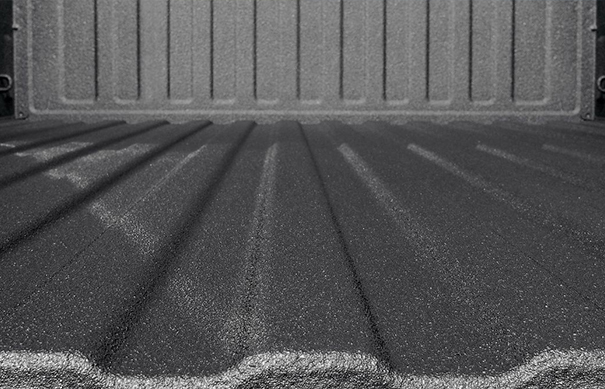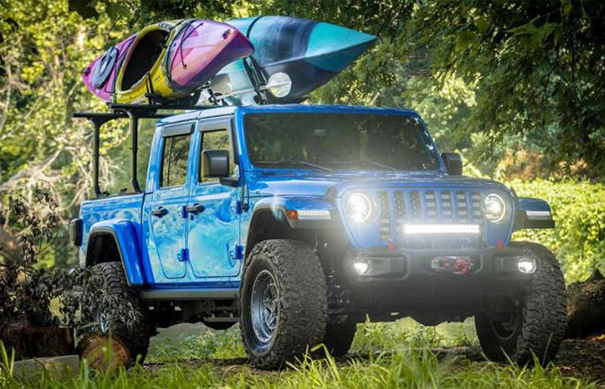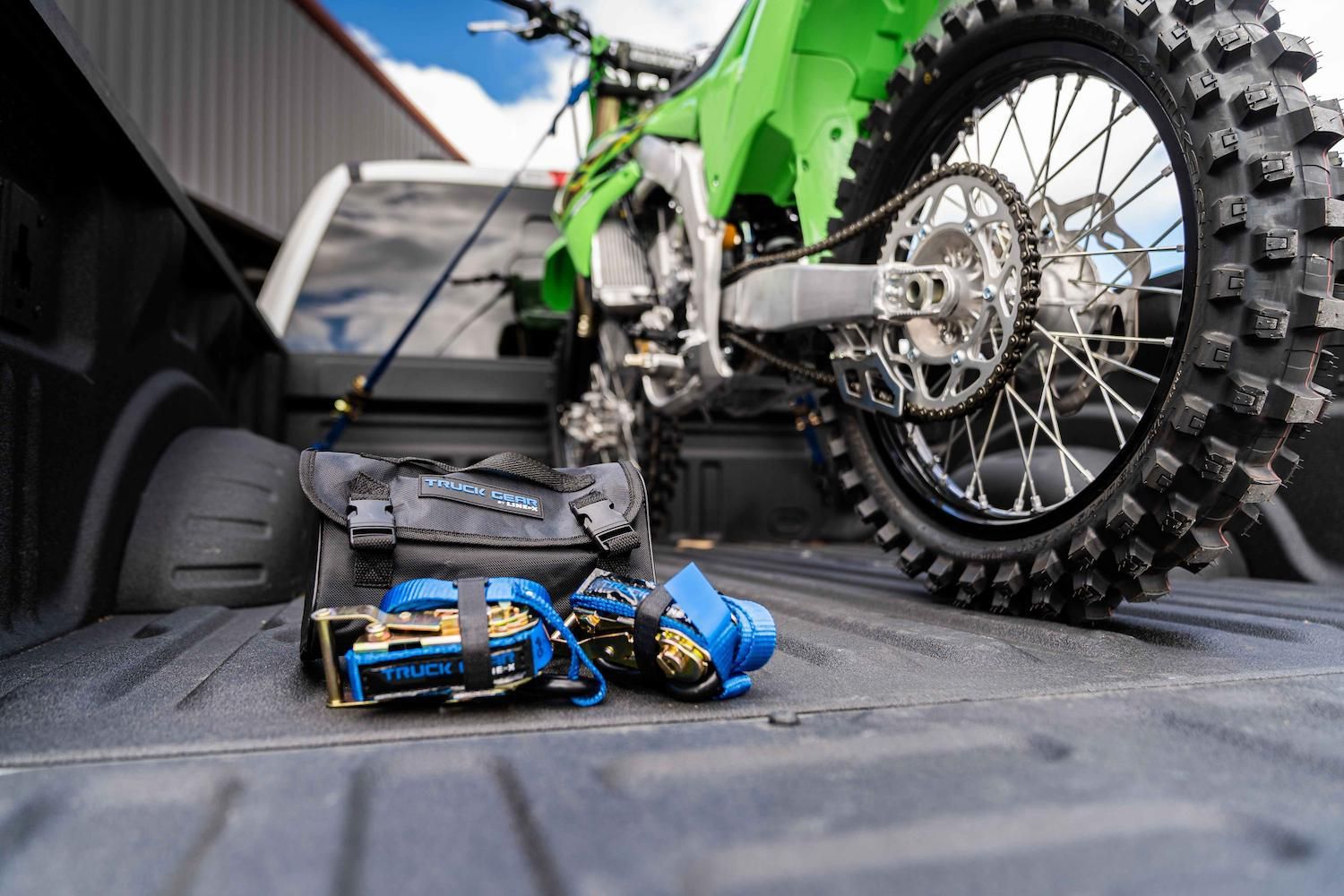Your pickup truck’s bed is the perfect spot to transport a motorcycle. But to do it safely and protect your bike, you’ll want to follow these tips from the experts at LINE-X. (There are many ways to transport a motorcycle with your truck, this is just one of them!)
Loading and unloading a motorcycle by yourself is very difficult. Protect yourself (and your bike) and grab a buddy to help you with this.
Tips to Strap Down a Motorcycle
You’ll need a good set of straps to secure your bike. We recommend ratchet straps, but cam straps also work well. Before you load your bike, set the truck’s parking brake, and if it’s manual put the truck into gear. If your motorcycle uses a carburetor, make sure to shut off the fuel valve before transporting it.
If your bike is very heavy (+400 lbs.) you might need to remove the tailgate to prevent damage. Before proceeding, make sure your tailgate can sustain the weight of your bike. This information can be found in the truck’s owner’s manual. If your bike exceeds the tailgates weight limit, you’ll need to remove the tailgate before loading your bike. Consult the owner’s manual on how to do this.
This method to transport a motorcycle compresses the suspension of your bike, which helps keep the straps tight. This is fine for transporting your bike, but don’t leave your bike with the suspension compressed for long periods of time, especially when you’re not transporting it.
Does It Fit?
First things first, you need to get your bike in the pickup bed. Some people ask themselves, “Can a motorcycle fit in a truck bed?” In most cases, the answer is yes, especially with the tailgate down. But if you’re not sure, measure the length of your bike and compare that to your truck’s bed length.
Load It Up
Once you’re sure you can fit your bike in the bed of your truck, it’s time to load it up. Always load a motorcycle with the front wheel forward. Hopefully, you have a motorcycle ramp to assist with this. If so, don’t forget to run a strap between the ramp and the truck (like the rear axle or hitch) to keep the ramp in place.
If you don’t have a ramp, you’ll need to get creative. You can back up the truck to a hill that’s big enough (but not too steep) to park the bike on and use a stout board to span the gap between the hill and the tailgate. Now, use gravity to roll the bike into the truck. Loading docks, steep driveways, or even a mound of grass can all serve the same purpose. If you’re by yourself, this method is much easier and safer than using a ramp. Even if you have a ramp, we still suggest using a hill or loading dock. If it’s a light bike, you can also heave it into the bed of a truck with help of a strong friend.
Strap It Down
If you’re transporting a motorcycle often, you’ll want a wheel chock. This gives the front wheel a solid anchor point. Wheel chock’s can be strapped or bolted in place. If you’re borrowing one, simply strap it in place with ratchet straps to the anchor points in the corner of your truck’s bed. If you don’t have a wheel chock, you’ll want to wedge the bike’s front tire into a front corner of the bed. This gives the bike’s front wheel something to brace against.
Once the bike is loaded into the truck bed, have your buddy sit on it to keep it upright while you strap down the front of it. Run a strap through an anchor point on your bike – the higher up the better. This could be the frame, crash bars, or the fork stanchions above the triple tree. The only thing that should contact the bike is the fabric strap, not any metal hooks. The metal hooks on the strap should go back to the metal tie-down points in the corner of your truck bed, the bed walls, or bed rails. Tighten the strap until you see the suspension compress slightly. Repeat this process on the other side of the bike.
These front straps are the bike’s primary connection to the truck’s bed. Strapping down the rear of the bike is important in case something up front fails, like a strap breaking or becoming loose. The process is similar to how you strapped down the front. Find the anchor points in the rear of your truck bed and run a strap around your bike’s frame, subframe, or rear swingarm and back. These straps need to be snug, but don’t get them excessively tight or you could damage something on the bike. Once everything is secure, tie down the excess slack to prevent straps from blowing in the wind.
Protect Your Truck’s Bed and Your Bike
Loading and unloading a bike a few times a week is tough on a truck bed. If you head to the track or the trails often, it would be wise to protect your investment with a LINE-X truck bedliner. It won’t just keep your truck bed scratch-free, our bedliners also provide traction to load your bike when your bed is wet and muddy. Stains from fuel, oil, or two-stroke mix are no problem since our bedliners resist staining from harsh chemicals. When you’re ready for the best bed liner in the industry, reach out to your local LINE-X dealer!



 English
English
 French Canadian
French Canadian





